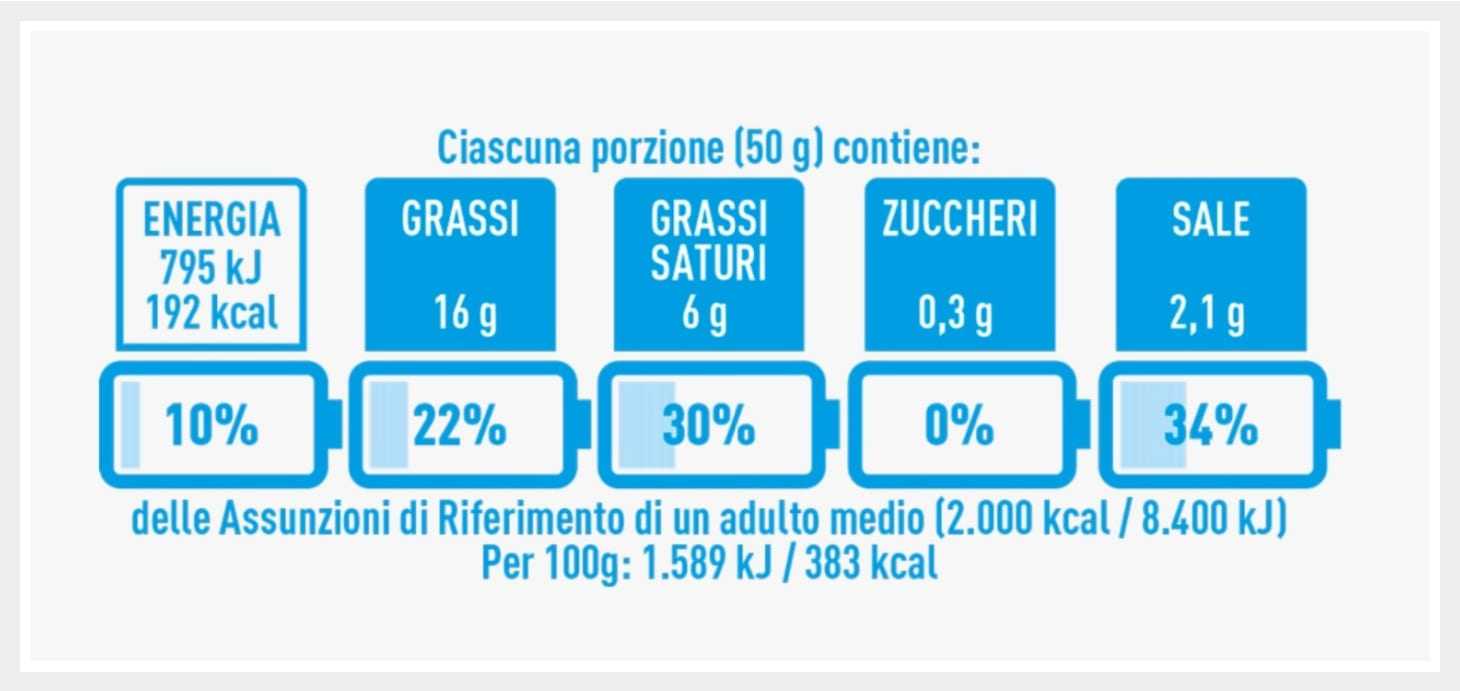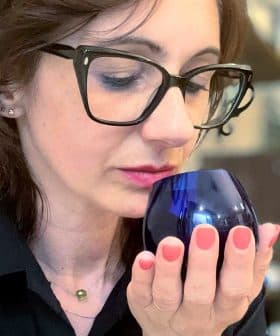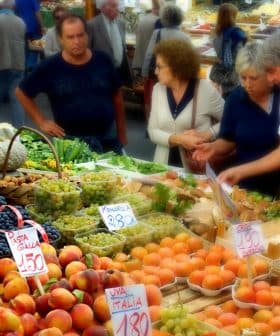Italian Politicians Condemn Nutri-Score As Antithetical to MedDiet
Italian politicians are resisting the adoption of Nutri-Score as the official FOPL system in the European Union, arguing that it oversimplifies food nutrition and ignores micronutrients. They are advocating for the adoption of the Italian alternative, Nutrinform Battery, instead, claiming that Nutri-Score is misleading and does not provide proper guidance for healthy eating.
Italian politicians continued their campaign to derail the adoption of Nutri-Score as the European Union’s official front-of-pack labeling (FOPL) system at a recent series of events.
Italian officials once again criticized Nutri-Score as an overly simplistic way to evaluate food nutrition.
Italy is against food package labeling founded on traffic-light systems, such as Nutri-Score, which arise from a simplistic approach to nutrition without clear scientific evidence.
They again argued that the French-born FOPL only takes macronutrient contents into account and ignores micronutrients – such as vitamins, minerals and polyphenols – which are responsible for some foods’ considerable health benefits.
The officials further accused Nutri-Score of misleading consumers and directly attacking the Mediterranean diet. Instead, the officials lobbied to adopt Nutrinform Battery, the Italian alternative that has also been widely criticized by its detractors.
See Also:Health Professionals in France Endorse Widespread Adoption of Nutri-ScoreThe two platforms are competing to become the E.U.-wide standard for food labels, with the European Commission set to determine by the end of the year.
“Italy is against food package labeling founded on traffic-light systems, such as Nutri-Score, which arise from a simplistic approach to nutrition without clear scientific evidence,” Luigi Di Maio, the Italian Minister of Foreign Affairs, told an audience of Italian scientists, farmers associations, food producers associations and national and European politicians.
“For instance, these systems’ algorithms could attribute to natural foods such as milk worst ratings than those given to sugar-free carbonated sodas,” he added.
The event, organized by the Ministry of Foreign Affairs and the food producers association Federalimentare, was supported by the major food and farming associations and several health groups devoted to the fight against obesity.
Michele O. Carruba, professor and president of the Center for Research on Obesity at the University of Milan, said that FOPLs, such as Nutri-Score, are not the answer to the obesity epidemic.
Carruba has examined 50 years’ worth of data regarding obesity worldwide. He said the chronic illness has complex social and nutritional causes.
Carruba believes that categorizing foods as “good” or “bad” does not adequately address the underlying causes of obesity. Instead, he believes concepts such as the Mediterranean diet are better suited to combating obesity.
“[The Mediterranean diet pyramid shows] there are no bad or good foods, but only bad or good diets,” he said. “The pyramid not only tells us how often we should eat specific kind of foods, but it also cites the suggested servings, the quantities which allow a balanced diet.”
According to Carruba, one of Nutri-Score’s most significant shortcomings is that it does not consider the portion sizes. Instead, Nutri-Score ratings are determined by the content of fats, sugars, sodium and calories per 100 grams or milliliters of a food item.
Carruba said that such standard quantities do not reflect the actual consumption and therefore cannot rate foods efficiently.
“None of us would use 100 grams of olive oil since the common serving ranges between 15 or 30 grams,” he said. “Still, olive oil is rated on a 100 grams basis.”
Carruba also believes Nutri-Score focuses more on the unfavorable contents of food than on its healthy qualities.
“Its algorithm attributes up to 40 negative points for contents with unfavorable effects and only 15 points at the most for the favorable part,” he said.

Nutri-Score, whose color-letter labels range from the healthy “Green A” down to the “Red E,” rates food as good or bad, said Carruba, “whereas the effect of food depends on the quantity and the frequency with which it is consumed.”
The Italian scientist emphasized the relevance of proper nutrition and told delegates that Nutri-Score is “merely interpretative and non-educational, non-informative system, as it does not improve the consumer’s knowledge or nutritional information.”
“Furthermore, it does not provide any assistance in deciding the overall diet composition, nor does it facilitate in any way the appropriate combination of various foods,” he added.
Vincenzo Salvatore, a professor of European law at the University of Insubria in Varese, said E.U. regulations describe two different kinds of food supplementary information that may be given to the consumer.
The first is additional information about the food itself. The second is the health claims, which suggest a correlation between a particular food and health.
“Health claims come from an estimate about the favorable or unfavorable effects of a given food,” Salvatore said. “Any such assessment means that the consumers are being prompted with a given behavior.”
According to Salvatore, Nutrinform Battery focuses on the information about food and the relevance of a single serving to an overall daily diet with its graphic scheme.

On the other hand, “Nutri-Score is a health claim system which does not seem to be able to educate the consumers about a healthy diet,” Salvatore said. “Instead, it prompts the consumer to buy a given product or discard another product based on an appreciation of its impact on health.”
“One thing is to educate the consumer showing that if you buy a chocolate bar and eat a piece of that you will eat 30 grams of sugar, a different thing is to put on that bar a red traffic-light label saying that you should not buy it at all,” he added.
Nutri-Score creator Serge Hercberg, a professor of nutrition at the Université Sorbonne Paris-Nord, told Olive Oil Times that the latest Italian criticisms directed toward the French-born front-of-pack labeling system do not stand.
“Nutri-Score has never been presented as a measure that in itself might be the answer to the obesity epidemic,” he said. “Instead, it can play a role among the measures implemented by a public health nutritional policy.”
“It is not a magic bullet, but as it has been demonstrated by several scientific studies published in peer-reviewed journals, Nutri-Score could potentially contribute to reducing obesity, chronic disease and mortality,” he added.
Herberg emphasized his support for the Mediterranean diet, which he said: “has been the basis of the French nutritional recommendations for many years.” Hercberg also reiterated how Nutri-Score is “totally consistent with MedDiet.”
The goal of Nutri-Score is to help consumers compare the overall nutritional quality of foods that are relevant to be compared or else comparable in terms of use or consumption patterns.
“The MedDiet is characterized by abundant consumption of fruit, vegetables, legumes, cereals, especially wholegrain, moderate consumption of fish and limited consumption of dairy products and low consumption of meat, cold cuts and sweet, fatty and salty products,” he said.
“It favors olive oil among added fats but does not recommend its consumption ad libitum,” Herberg added. “The Mediterranean diet does not, therefore, under any circumstances, as the Italian arguments suggest, promote cheeses and processed meats, whether Italian or not.”
Herberg also pointed out that many studies confirm the science behind the development and deployment of Nutri-Score. For example, he cited epidemiological studies from France (SUVIMAX, NutriNet-Santé), Spain (SUN and ERICA cohorts) and Europe.
Herberg also refuted the idea that the Nutri-Score algorithm does not rate foods as bad or good.
“It is a gradual FOPL with five categories presented in colors and letters, which allow consumers to compare the nutritional quality of foods in relative terms and not in absolute value,” he said.
“The goal of Nutri-Score is to help consumers compare the overall nutritional quality of foods that are relevant to be compared or else comparable in terms of use or consumption patterns,” he added.
According to Hercberg, focusing on 100 grams or milliliters instead of a single serving of specific foods is “based on both conceptual, pragmatic, scientific and public health arguments.”
“What is useful for consumers is to be able to compare different breakfast cereals, to identify those with the best nutritional quality,” he added. “Or to compare different vegetable oils or other added fats, or compare different cheeses, different pizzas and different cookies.”
“Finally, for a specific occasion of consumption, let us say breakfast, it is helpful for consumers to be able to compare the differences of nutritional quality between foods usually consumed at this occasion: bread, as refined-grain or whole-grain bread, brioches, breakfast cereals, cookies or rusks,” Herberg continued.
Therefore, Hercberg said, a “simple, objective and standardized common denominator” is needed to allow consumers to recognize at a glance food that exhibits the most favorable nutritional composition compared to others.
According to Hercberg, a standard serving does not exist as it depends on many variables such as age, sex and other conditions of the consumers.
“Many studies have shown that consumers have difficulty to assess the amount corresponding to a serving accurately,” he concluded.









